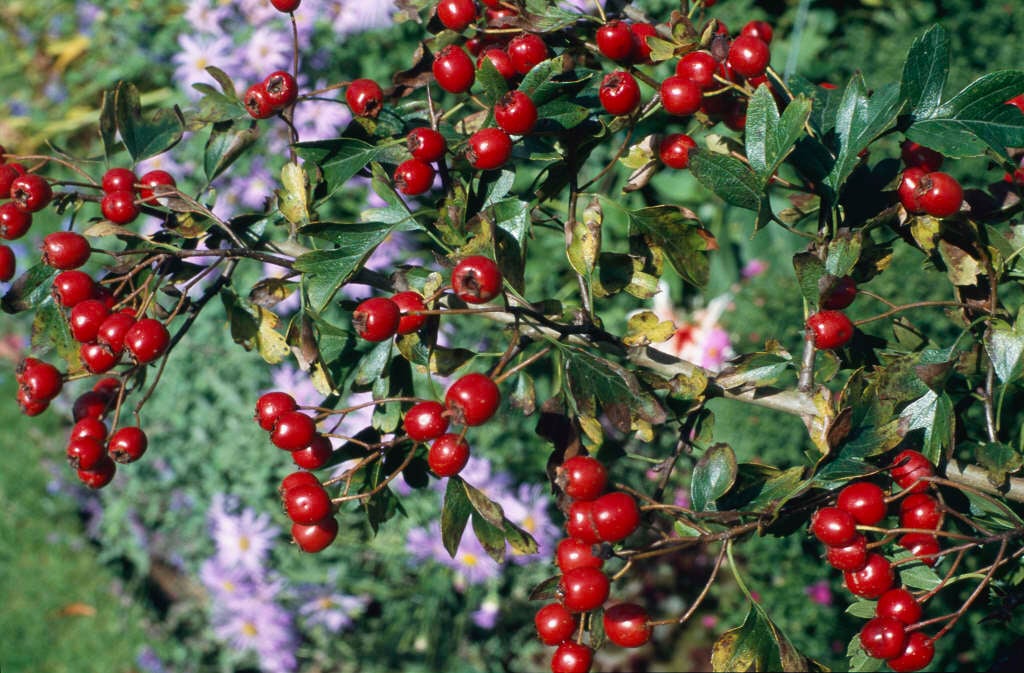Crataegus monogyna
common hawthorn
A rounded deciduous tree to about 10m in height, with thorny branches and glossy, deeply lobed dark green leaves, colouring gold in autumn. Flat sprays of fragrant, creamy-white flowers with pink anthers, are produced in late spring, followed by plentiful dark red edible berries in autumn. The fruit can be made into jellies or used for making herbal tea
Size
Ultimate height
4–8 metresTime to ultimate height
10–20 yearsUltimate spread
4–8 metresGrowing conditions
Moisture
Moist but well–drained, Well–drainedpH
Acid, Alkaline, NeutralColour & scent
| Stem | Flower | Foliage | Fruit | |
| Spring | Cream White | Green | ||
|---|---|---|---|---|
| Summer | Green | |||
| Autumn | Gold Yellow | Red | ||
| Winter |
Position
- Full sun
- Partial shade
Aspect
North–facing or East–facing or South–facing or West–facing
Exposure
Exposed or Sheltered Hardiness
H7Botanical details
- Family
- Rosaceae
- Native to GB / Ireland
- Yes
- Foliage
- Deciduous
- Habit
- Bushy, Spreading branched
- Potentially harmful
- Seeds contain toxins so these should be removed if you are considering eating the fruit, usually grown as an ornamental shrub Pets: Fruit are ornamental - not to be eaten - see the HTA guide to potentially harmful plants for further information and useful contact numbers
- Genus
Crataegus are deciduous trees and shrubs, usually with spiny branches, lobed or toothed leaves, and clusters of creamy-white flowers followed by red or black fruits. Some have fine autumn colour
- Name status
Correct
- Plant range
- Europe N Africa SW Asia
How to grow
Cultivation
Grow in any (not waterlogged) soil in full sun or part shade. Useful specimen trees for town, coastal or exposed gardens. Used extensively for wildlife hedging. See hawthorn cultivation for further advice
Propagation
Propagate by seed, or grafting in winter
Suggested planting locations and garden types
- Coastal
- Cottage and informal garden
- Wildflower meadow
- Wildlife gardens
- Hedging and screens
- Edible fruit
Pruning
Pruning group 1; or trim hedges after flowering or in autumn
Pests
May be susceptible to caterpillars, aphids and gall mites
Diseases
May be susceptible to fireblight, honey fungus, crown gall, silver leaf, Powdery mildews and leaf spots
Get involved
The Royal Horticultural Society is the UK’s leading gardening charity. We aim to enrich everyone’s life through plants, and make the UK a greener and more beautiful place.
